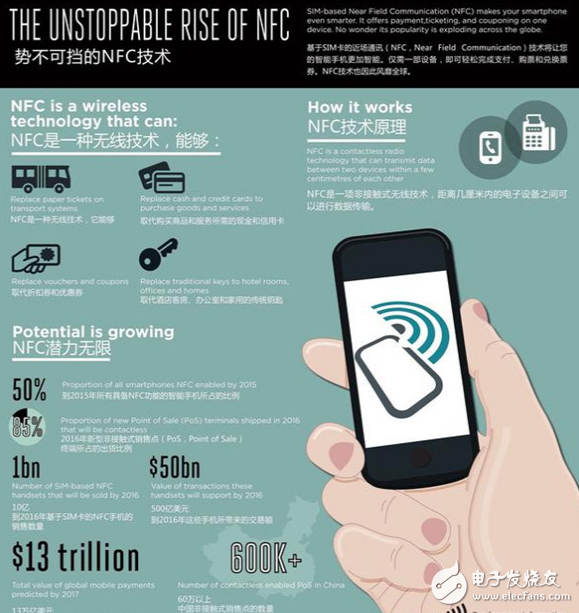NFC has the relevant payment function, and it has to say that the important role of the TSM platform in the SE-based NFC payment model.
So what is TSM?   
TSM is the abbreviation of Trusted Service Manager. The literal meaning is trusted service management. It is based on one-card multi-application technology, realizes the space management of security chip (SE), application access and air card issuance system, and finally realizes the mobile payment closed-loop process realized by NFC and other technologies interacting with traditional receiving devices.

In short, all NFC mobile phones and even wearable payment products need to implement air card issuance, air recharge and other application access, which are inseparable from the TSM platform.
According to GlobalPlatform's definition in relevant standards, TSM is divided into two categories - Security Module Provider TSM (SEI TSM) and Service Provider TSM (SP TSM). SEI TSM is responsible for providing SE lifecycle and security domain management services to SE providers, while SP TSM is responsible for providing application lifecycle services to service providers.

At the beginning of 2016, Apple Pay and Samsung Pay's entry into China set off a wave of mobile payment, which also prompted other mobile phone manufacturers to start their deployment in the NFC mobile payment field. However, mobile phone manufacturers want to enter the domestic NFC mobile payment market, UnionPay has become a channel that cannot be opened. One can not be less, Apple and Samsung Pay are all included in the UnionPay cloud flash payment camp, until today, domestic mobile phones represent Huawei, Xiaomi's Huawei Pay and MI Pay, and are also a strong cluster of UnionPay cloud flash payment.
Coupled with the recent emergence of related Internet of Things, smart home and other concepts, NFC seems to be out of everyone's sight, but from the basic NFC function, if NFC can join the TV, induction cooker air conditioning. Wait a series of electronic homes, door locks and the like, then can we think that NFC may be able to achieve offline IoT?
Of course, this is a conjecture. Because Xiaobian is not too familiar with pure technology.
However, Xiao Bian believes that since it is the Internet of Things, to achieve the state of the Internet of Everything, can it be divided into: offline and online interconnection?
Obviously, esim is idealized to buy independent traffic, and the scope of use is relatively wide. But as long as I think about it, I want to buy traffic for my induction cooker, buy traffic from the TV, buy traffic on the tablet, buy traffic for the windows of the door, etc., and Xiaobian’s face begins to cramp.
The basic function of NFC is to read the card, that is, the electronic chip inside the card to read information, legally rewrite and other functions. I believe that the implementation of basic card reading and writing card functions is currently relatively mature in China.
Some of the home appliances of Xiaomi Company also have built-in sim cards, which can receive relevant news, nearby supermarket shopping, and weather information. As for how to deduct the traffic fee, what is a mode, Xiaobian is not too clear for the time being.
The development of the technology of the Internet of Things also has some companies developing towards Bluetooth and other functions. The "wireless interconnection" function is realized by short-distance interconnection. Most households in the country have refrigerators, TVs and other home appliances, if these appliances are Bluetooth interconnected. So as long as the speed problem and size of the interconnected data transmission are solved, the dog can realize the concept of "Internet of Everything".
As shown above, as early as 13 years, some of the home appliances have been interconnected, but I don't know why, so the way of Bluetooth interconnection has not received the attention of the company.
Ok, let's take a look at the interconnection distance of NFC.
This distance mobile phone can effectively read the contents of the appliance or the card, and the nfc patent is firmly controlled by Nokia.
It is no wonder that the people of the country will use other methods to consider the problem of the Internet of Everything. It seems that the "patent fee" can not afford to hurt. Plus without their own technology, they put their minds on the Internet. But can we consider ourselves to develop high-quality products with excellent offline performance?
BLPS laser safety protective device is designed for personal safety used on hydraulic bender.
The dynamic test technology it used has passed the Type 4 functional safety assessment by TUV, and get the national invention patent. The product reaches the advanced technological level of similar products.
BLPS laser safety device provides protection zone near the die tip of the bender to protect fingers and arms of the operator in close to the upper mold die tip. It is the most effective solution so far to preserves the safety and productivity of the bender.
Press Brake Protection,Laser Guarding Device,Press Brake Guarding Systems,Press Brake Guarding
Jining KeLi Photoelectronic Industrial Co.,Ltd , https://www.sdkelien.com